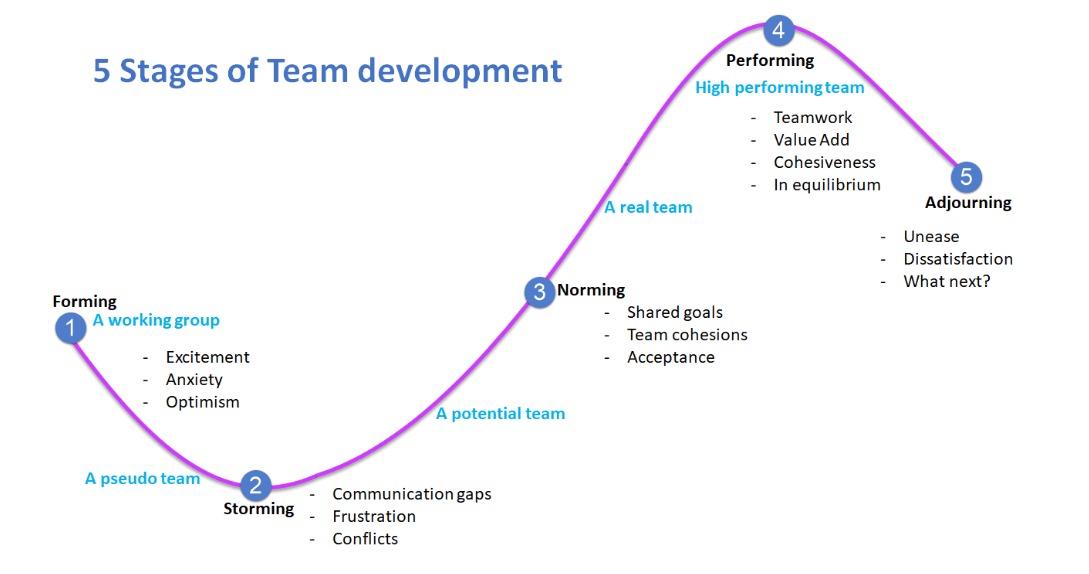The 5 stages of team development
Leading a team of people can be challenging. If you are confused about why sometimes your team are rockstars and other times struggling, or driving you crazy, then you need to understand Tuckman’s model of effective teams.
In 1965, the US Navy engaged a psychologist named Bruce Tuckman to develop a model that represented effective teams. Tuckman, came up with his model and the memorable phrase "forming, storming, norming, and performing" in his 1965 paper, "Developmental Sequence in Small Groups." He later added a fifth stage, "adjourning" (also known as "mourning") to mark the end of a team's journey.
The secret to forming a high performing team is understanding your teams behaviour, how to guide them through various stages of behaviour and to help them grow! An overview of Tuckman’s five stages of team development are:
- Forming – the team is a set of individuals and there is uncertainty about roles. The team will seek to establish ground rules.
- Storming – the team starts getting real but there is often resistance and jostling for position.
- Norming – The team develops a set of norms, start communicating better and become more accepting of each other.
- Performing – The team is cohesive, competent and focused on getting the job done.
- Adjourning (or Mourning) – The team celebrates achieving goals and may also dissolve or have significant changes in the team. This stage is about reflection and closure.
This model is fantastic for understanding and predicting behaviour and it’s a bonus that most of the stages rhyme, making them easier to remember! The strength of the Tuckman model is also that it provides a framework of expectation, and actions.
I find Tuckman’s model helpful to view on the Kubler Ross change curve. The combined Tuckman and Ross model’s are a great visual reminder of the process of change which includes team development.

Where can Tuckman’s model be used effectively?
- The creation of a new team – whether it’s for a project, after a change in structure, fusing of multiple teams, change in a team’s duties or responsibilities, or the need to create a new team due to business growth.
- New Manager or Leadership Training/Coaching - for some leadership is instinctive, for others, having a model to refer to, or use in their first days of being a leader will help them with the transition to their new role.
- Leadership training, linking the Tuckman model with Hersey and Blanchard’s “Situational Leadership model - Can assist with targeted coaching conversations and adaptive leadership.
Sharing the Tuckman’s model with your team members can help the team to understand that feelings and frustrations are the normal outcomes of team formation, and it can also help during one-on-one sessions with team members.
We unpack this model in more detail and give leaders the tools and knowledge to understand the impacts of behaviour and how you can lead through change during the 5 stages of team development in our
Leadership Unbound coaching programs and we can also run team workshops to help support changes.
Contact us now for more information on individual or group training options.


READY TO GET THINGS DONE?
Revolution Consulting Group is your Dedicated HR Partner









